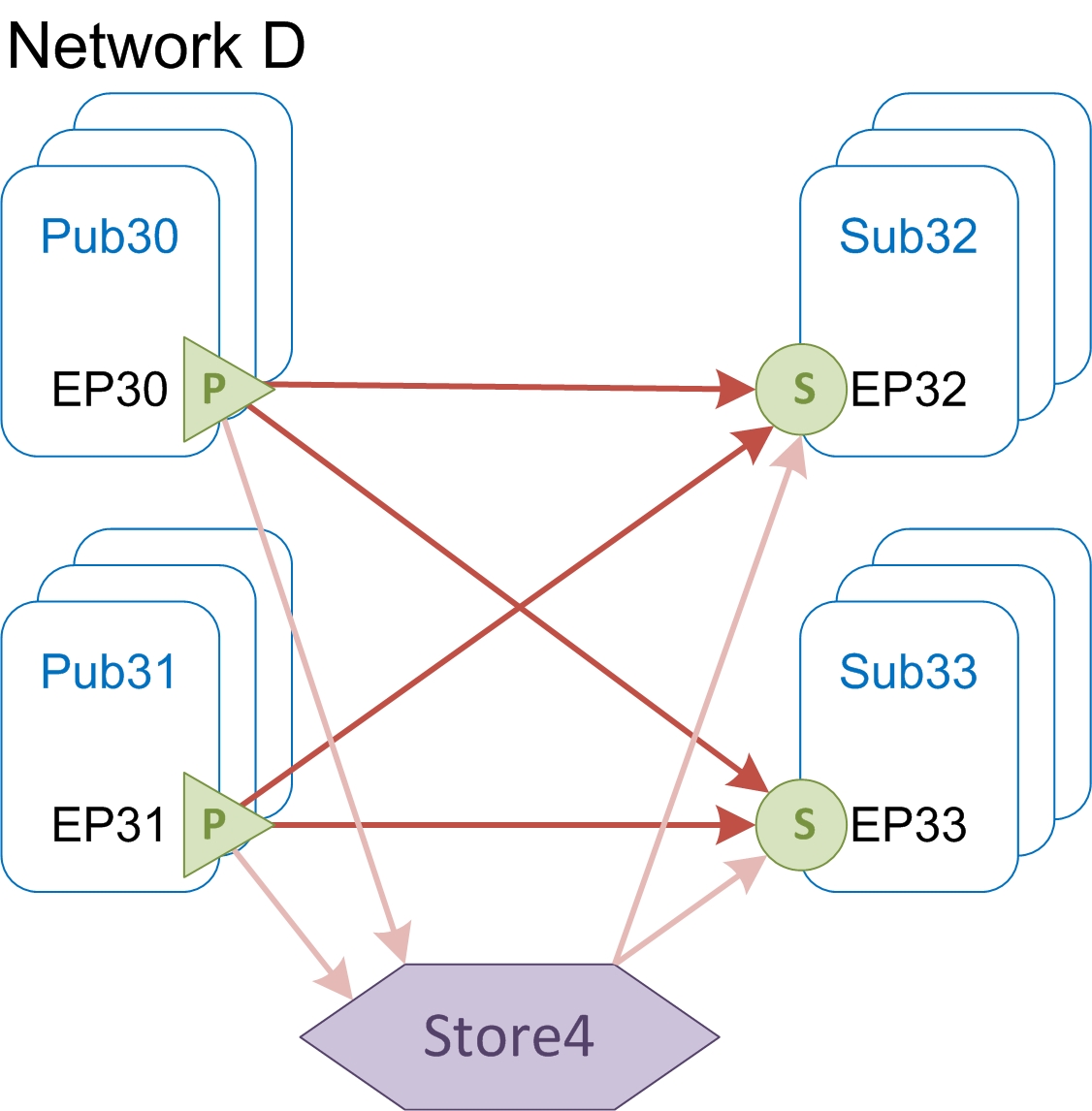Direct-Path Requirement and Merging
This example returns for a closer look at two aspects of persistence stores: the direct-path requirement of standard durables, and the merging of publisher streams into one message stream.
The preceding diagram depicts a network of endpoints.
- Network D consists of endpoints EP30 through EP33, connected by direct-path transports.
- Store4 backs network D. That is, it backs all the direct-path transports.
- Actually, network D is not more topologically complex than network A in the earlier diagram Store Backs a Transport. Rather, we have drawn more detail to highlight the direct paths, and the merging of publisher message streams.
Merging within a Network of Endpoints
Now focus on the publisher message streams in the diagram:
- Each direct path flowing from EP30 merges message streams from potentially many publishers in the potentially many program processes that publish on EP30. When a message arrives at a subscriber, it does not include information that identifies the publisher nor the publishing program.
- Similarly, Store4 merges the message streams from publishing endpoints EP30 and EP31. When message arrives at Store4, it does not include information that identifies the publishing endpoint.
- Although this example uses standard durables, merging would be identical if the store used shared durables.
Copyright © Cloud Software Group, Inc. All rights reserved.

